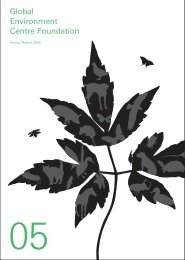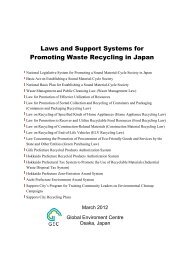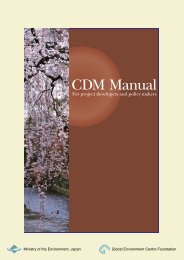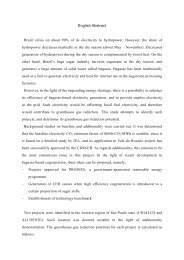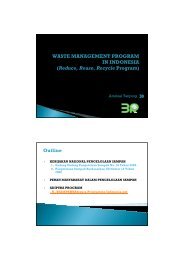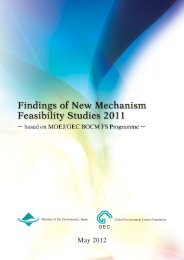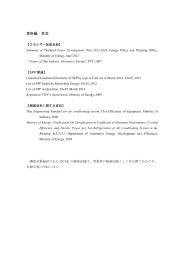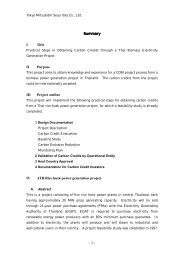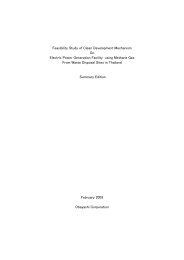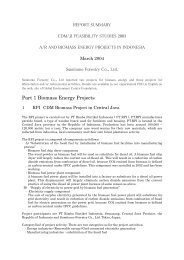PDF File - GEC
PDF File - GEC
PDF File - GEC
You also want an ePaper? Increase the reach of your titles
YUMPU automatically turns print PDFs into web optimized ePapers that Google loves.
CDM is the only Kyoto Protocol mechanism under which credits can be generated starting from year<br />
2000, prior to the Kyoto Protocol First Commitment Period (2008-2012). This is often referred to as<br />
“retroactive crediting” (See Section 3.4 for details).<br />
1.2 Key Concepts of CDM<br />
1.2.1 Baseline<br />
Baseline is defined as “the scenario that reasonably represents the anthropogenic emissions by<br />
sources of greenhouse gases that would occur in the absence of the proposed project activity” [CDM<br />
Modalities and Procedures (CDM M&P) 2 , para. 44].<br />
1.2.2 Additionality<br />
The concept of “additionality” is closely related to<br />
that of “baseline”, and has to be paid particular<br />
attention to when setting up a baseline scenario<br />
and developing a methodology. It is defined<br />
in the CDM M&P that “[A] CDM project activity<br />
is additional if anthropogenic emissions of<br />
greenhouse gases by sources are reduced below<br />
those that would have occurred in the absence of<br />
the registered CDM project activity” [CDM M&P,<br />
para. 43].<br />
GHG<br />
emissions<br />
Baseline emissions<br />
Emission<br />
reduction<br />
Project emissions<br />
year<br />
Figure 1-2 Concepts of baseline and additionality<br />
The EB at its 10th meeting (EB10) provided four options as examples of tools that may be used to<br />
demonstrate that a project is additional and therefore not the baseline scenario including, among<br />
others:<br />
(a) A flow-chart or series of questions that lead to a narrowing of potential baseline options; and/<br />
or<br />
(b) A qualitative or quantitative assessment of different potential options and an indication of<br />
why the non-project option is more likely; and/or<br />
(c) A qualitative or quantitative assessment of one or more barriers facing the proposed project<br />
activity (such as those laid out for Small-Scale CDM projects); and/or<br />
(d) An indication that the project type is not common practice (e.g. occurs in less than [



